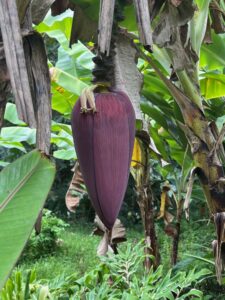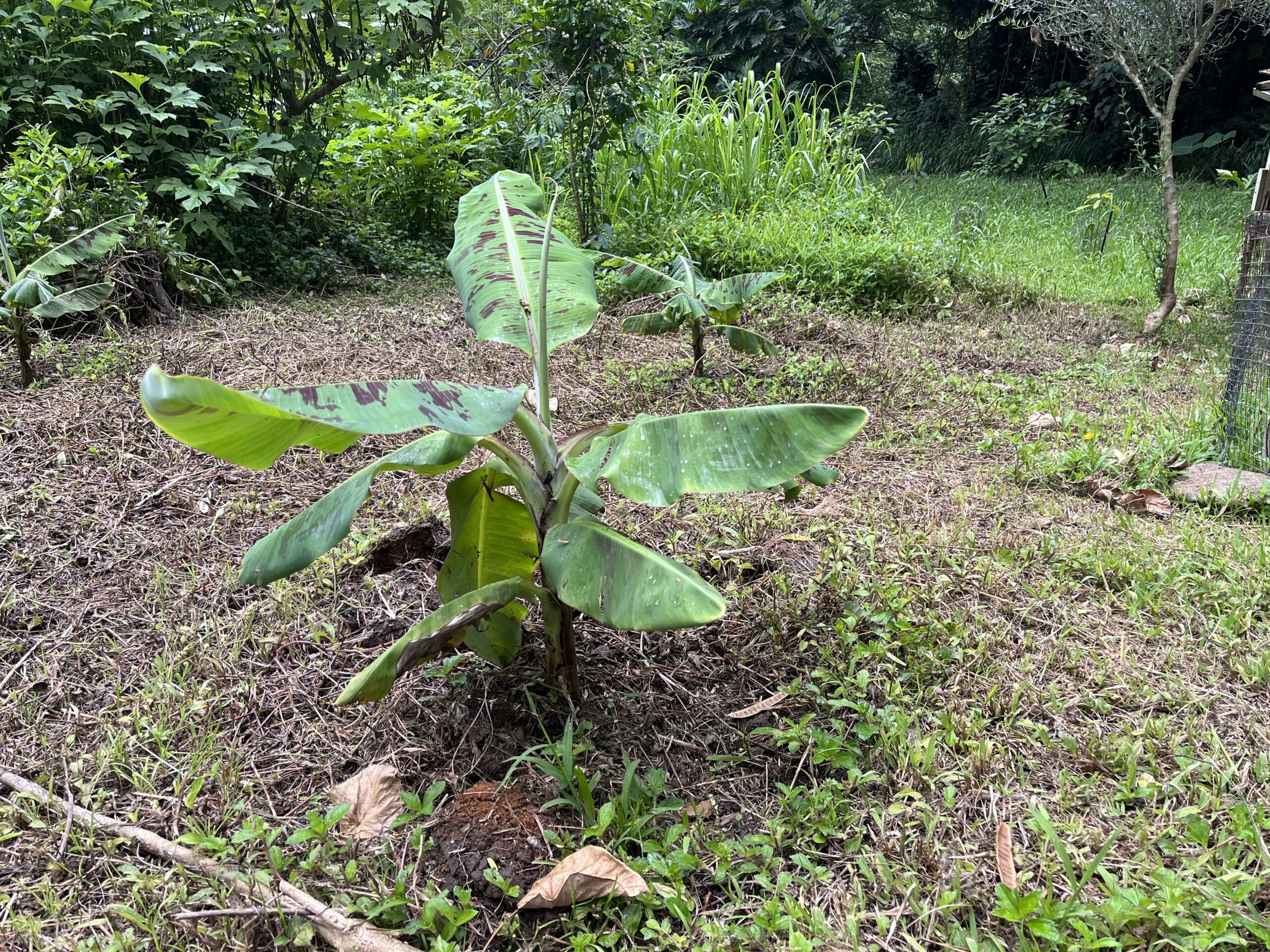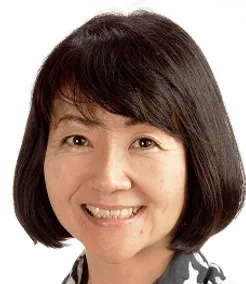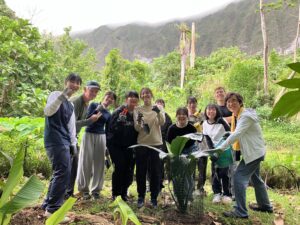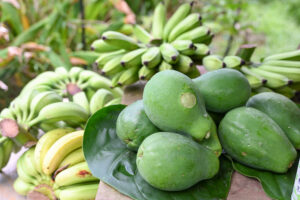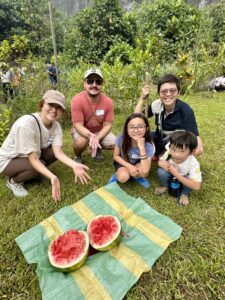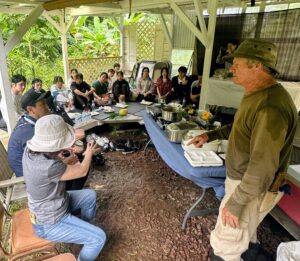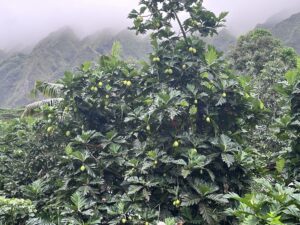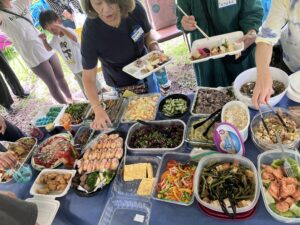What do you think this plant is?
The answer is a young Mahoi banana tree. Gary planted a 20-centimeter seedling a couple of weeks ago. When I checked it this weekend, it had grown to more than three times its original size.
In Hawaii, we always have strong sunlight throughout the year. But especially in summer, the leaves of plants grow vigorously, turning the entire farm into a vibrant green and presenting a gorgeous light show as they reflect the sunlight. The star plants of this season, which delight our eyes with their large leaves swaying in the wind and a variety of green gradations, are ulu (breadfruit), avocado, turmeric, and banana.
While I referred to them as “banana trees,” their true nature is that of a ‘pseudostem’ formed by multiple layers of perennial leaves that overlap to resemble a stem. In other words, bananas are not the fruit of a tree but rather the fruit of grass. For convenience, however, we will refer to them as “trees” throughout this article.
Banana trees only bear fruit once in their lifetime, so once they have fulfilled their purpose, they are cut down. However, new shoots emerge from the same rootstock beside the fallen tree, and after 9 to over 12 months, these shoots grow into large banana trees. Through this natural cycle, life is sustained, allowing us to enjoy the convenient, delicious, and nutrient-rich banana fruit in a sense perpetually.
Bananas are relatively inexpensive energy sources but lower in calories compared with rice or bread, but rich in potassium, which helps the body eliminate excess salt and is expected to improve edema and high blood pressure. Bananas also provide B-complex vitamins that help relieve fatigue, polyphenols with antioxidant properties, carbohydrates that provide energy, magnesium that is essential for maintaining healthy bones and muscles, and dietary fiber that regulates bowel movements, making them fruits that can help prevent lifestyle-related diseases. Today, they are gaining renewed attention more and more. (Reference: https://www.healthline.com/nutrition/11-proven-benefits-of-bananas)
While bananas are well-suited to Hawaii’s climate and can be grown naturally, when you look at the labels of inexpensive sale items at supermarkets in Oafu, they often say “produced in xxxx (Central or South America).” Considering the drastically rising import tariffs, increasing fuel costs, and environmental damages associated with transportation, it seems likely that locally grown Hawaiian bananas should be reevaluated further by local residents.
At our farm, we currently grow seven varieties of banana trees, including the popular Apple banana with its sweet and sour taste, the Williams banana with its long edible part and abundant nectar, making it ideal for smoothies and sweets, the Burro banana with its thick and dense fruit that becomes sweeter and more aromatic when cooked, making it suitable as a side dish for meat recipes, and the Mahoi mentioned earlier.
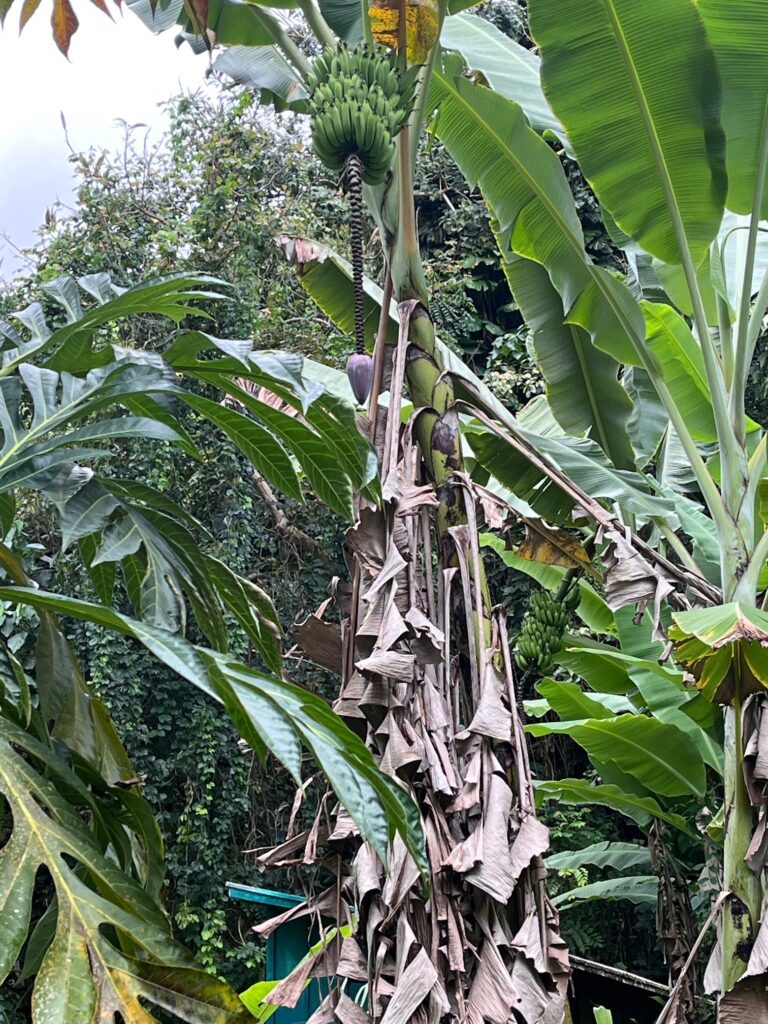
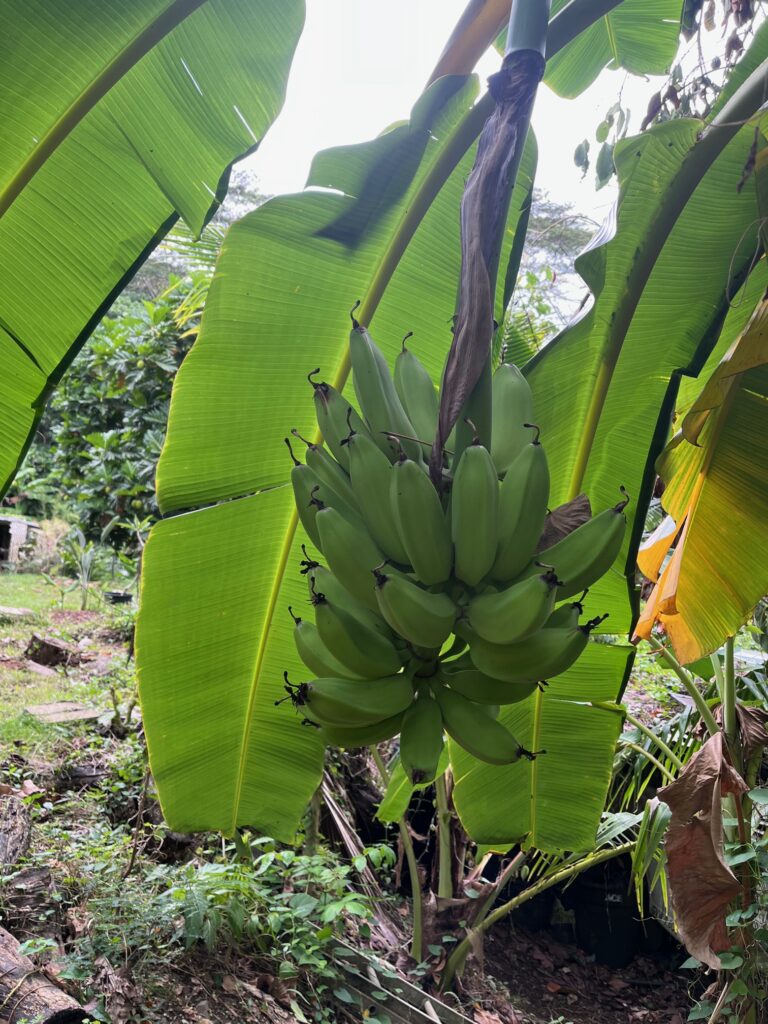
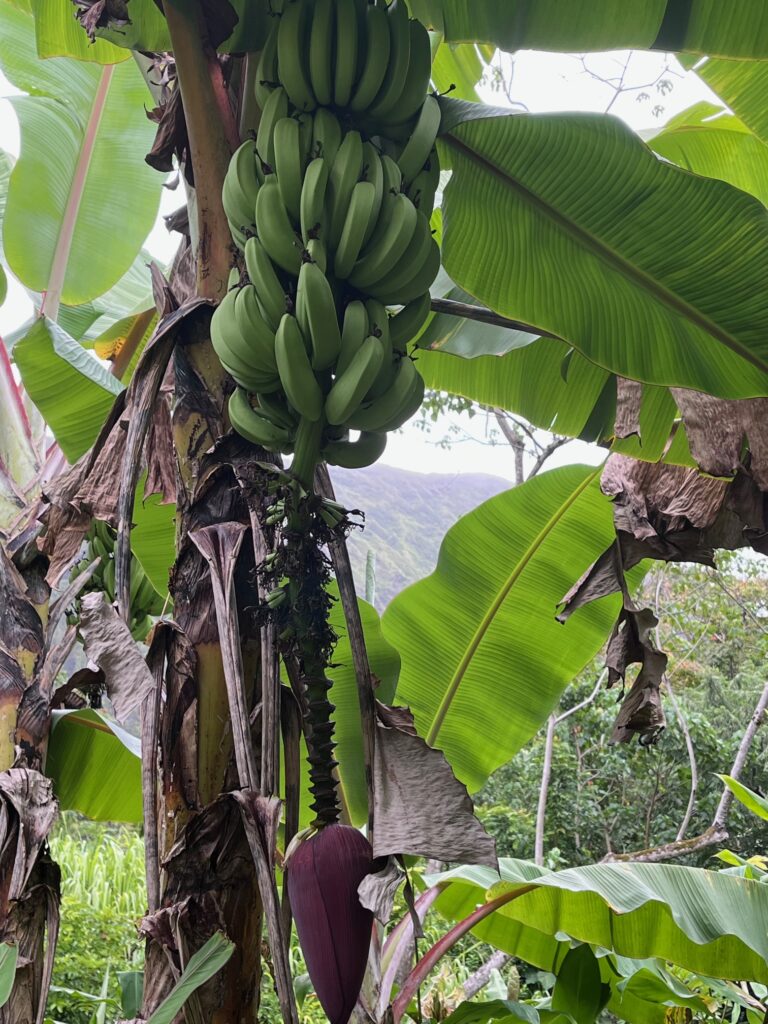
Unlike large-scale banana plantations that cultivate hundreds of varieties, the Second Nature Farm’s bananas grow naturally alongside ulu and avocado trees. Their green leaves form a plant canopy, making it difficult for first-time visitors to distinguish between the different varieties. If you are interested, why not join our farm as a volunteer or a farm member, help cultivate and harvest the bananas, and taste them for yourself?
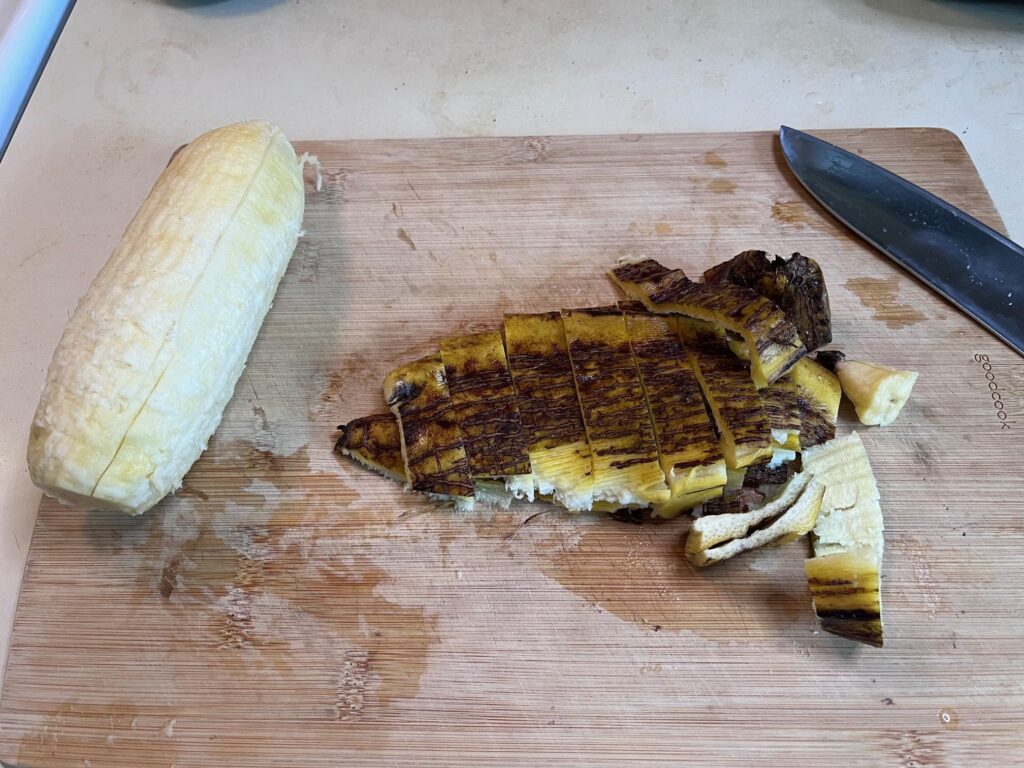
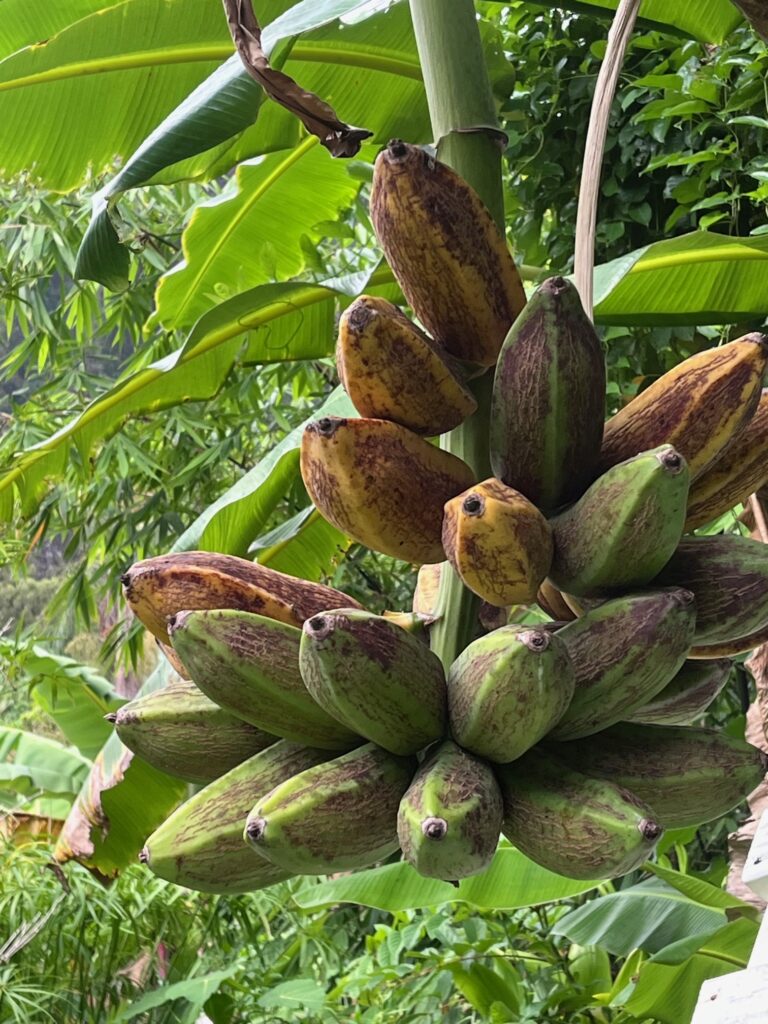
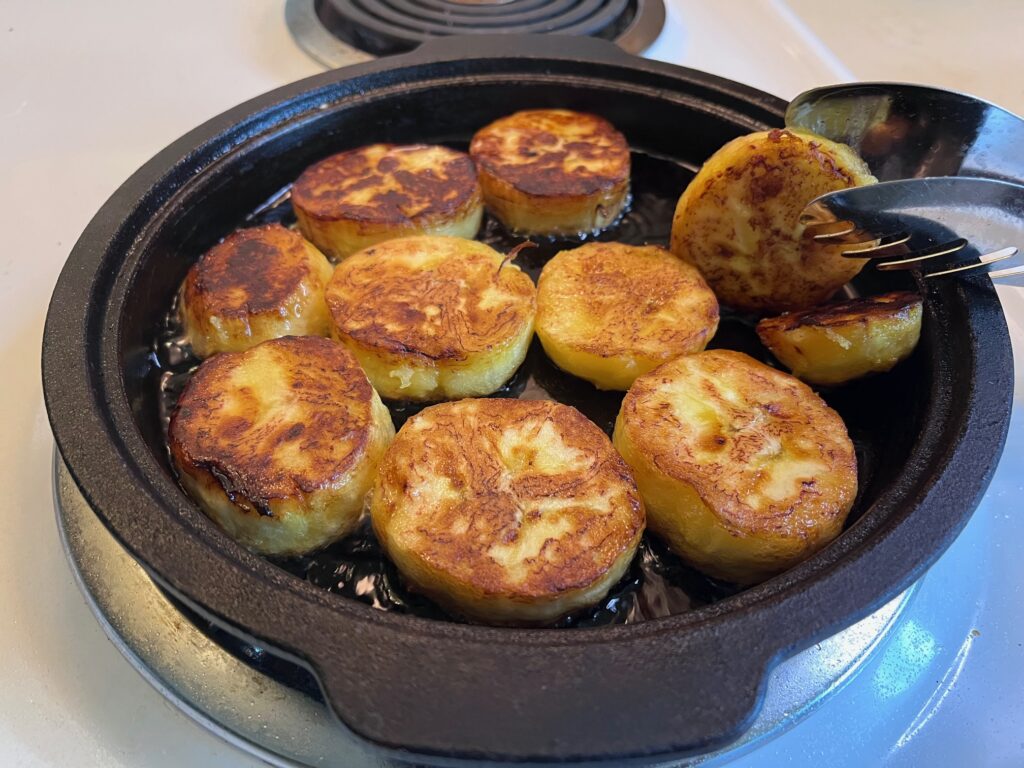
Now, let’s return to the topic of the newly planted Mahoi. Mahoi means “twin” or “double” in Hawaiian, and it is called this because two or more large bunches grow on a small tree. This variety is commonly known as “Mahoi” in Hawaii, but it is also referred to by its common name, “Double Mahoi.” When you visit our farm for the upcoming seasonal events, please take a look at how much the Mahoi bananas have grown.
